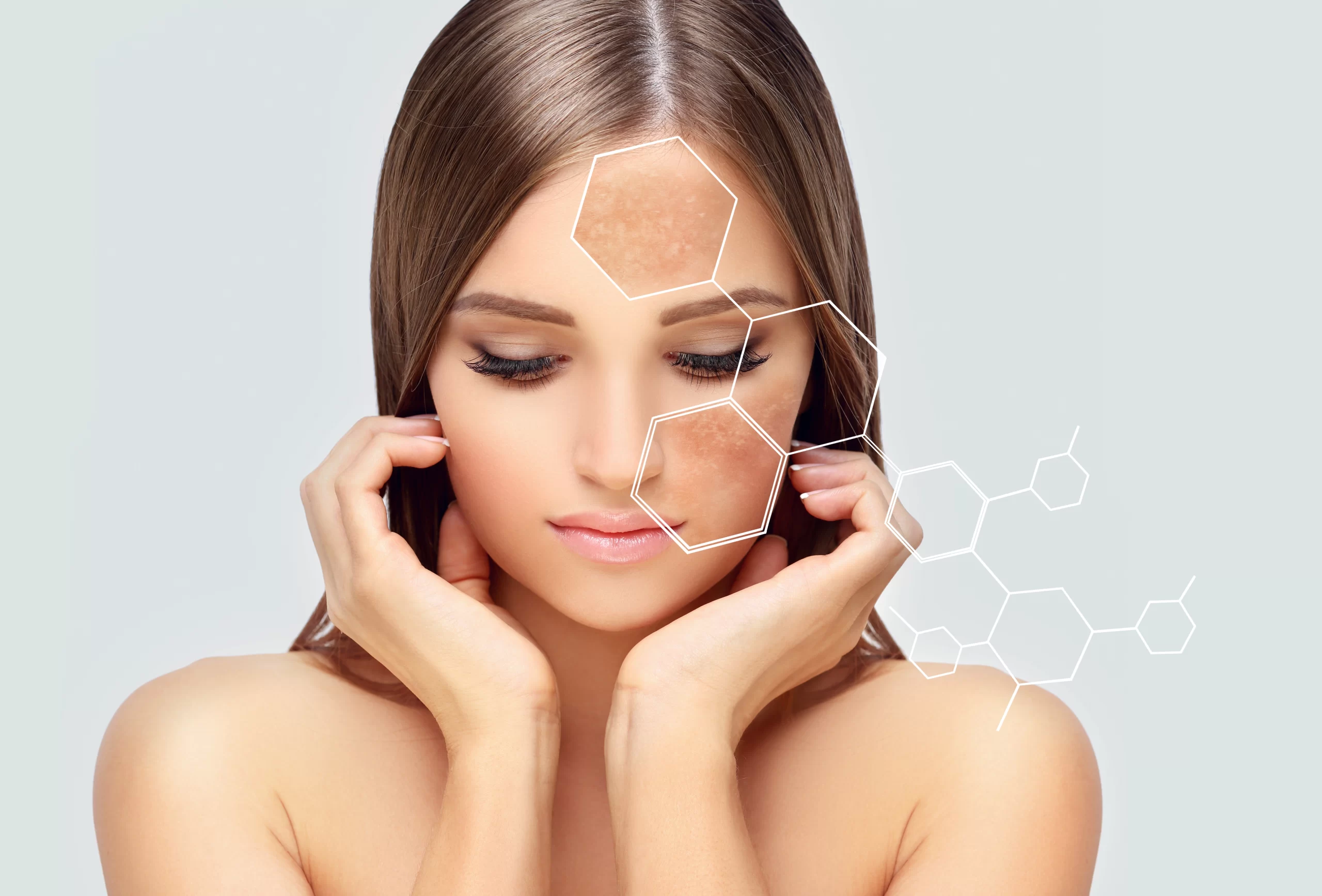
If you’ve ever stared at your reflection and noticed dark patches on your skin, you’re not alone. Skin discolouration is super common, but it can be confusing to figure out what’s going on.
Is it melasma? Hyperpigmentation? Are they the same thing?
Don’t worry—I’ve got you covered. Let’s break it down in simple terms, backed by science, so you can understand what’s happening and what you can do about it.
Hyperpigmentation is like an umbrella term for any dark spots or patches on your skin. It happens when your skin produces too much melanin (the pigment that gives your skin its colour). Think of it as your skin’s way of saying, “Hey, something’s up here!”
Hyperpigmentation is usually harmless, but it can be annoying, especially if it’s on your face.
The good news? It’s treatable!
Did You Know? Fascinating Facts About Melanin🔬 Melanin is your skin’s natural sunscreen – It absorbs UV radiation and helps protect against sun damage. |
Dermatologists like me often use a combination of treatments to reduce hyperpigmentation based on its cause and severity:
Melasma is a type of hyperpigmentation, but it’s a bit more specific. It’s like hyperpigmentation’s more stubborn cousin. Melasma shows up as brown or greyish patches, usually on the cheeks, forehead, nose, or upper lip. It’s often called the “mask of pregnancy” because it’s super common in pregnant women, but it can happen to anyone.
Melasma is tricky because it’s chronic—it can fade and come back, especially if you’re not careful with sun protection.
Melasma is more stubborn than general hyperpigmentation, so dermatologists take a targeted approach:
Here’s a quick cheat sheet:
Feature | Hyperpigmentation | Melasma |
Appearance | Dark spots or patches | Symmetrical brown/grey patches |
Common areas | Anywhere (face, hands, body) | Cheeks, forehead, upper lip |
Causes | Sun, acne, injuries, skin conditions | Hormones, sun, genetics |
Duration | Can fade with treatment | Often chronic, comes and goes |
Still unsure? A dermatologist can help diagnose it with tools like a Wood’s lamp, which shows how deep the pigment is in your skin.
Now for the good stuff—how to tackle these pesky patches!
Both melasma and hyperpigmentation love the sun. Wearing SPF 30+ every single day (yes, even indoors) is your first line of defence. Look for broad-spectrum sunscreens with zinc oxide or titanium dioxide.
If over-the-counter products aren’t cutting it, or if you’re unsure what’s causing your dark patches, it’s time to see a pro. They can create a personalized plan for your skin type and concerns.
Pro Tip: The sooner you start treatment, the better your results!
Yes! Though it’s more common in women, men can also develop melasma, especially with sun exposure and genetics.
Foods rich in antioxidants like Vitamin C, E, and glutathione can help. Eat: 🍊 Citrus fruits (oranges, lemons) 🥦 Leafy greens (spinach, kale) 🐟 Omega-3-rich fish (salmon, walnuts)
Yes! Stress increases cortisol levels, which can stimulate melanin production and worsen pigmentation.